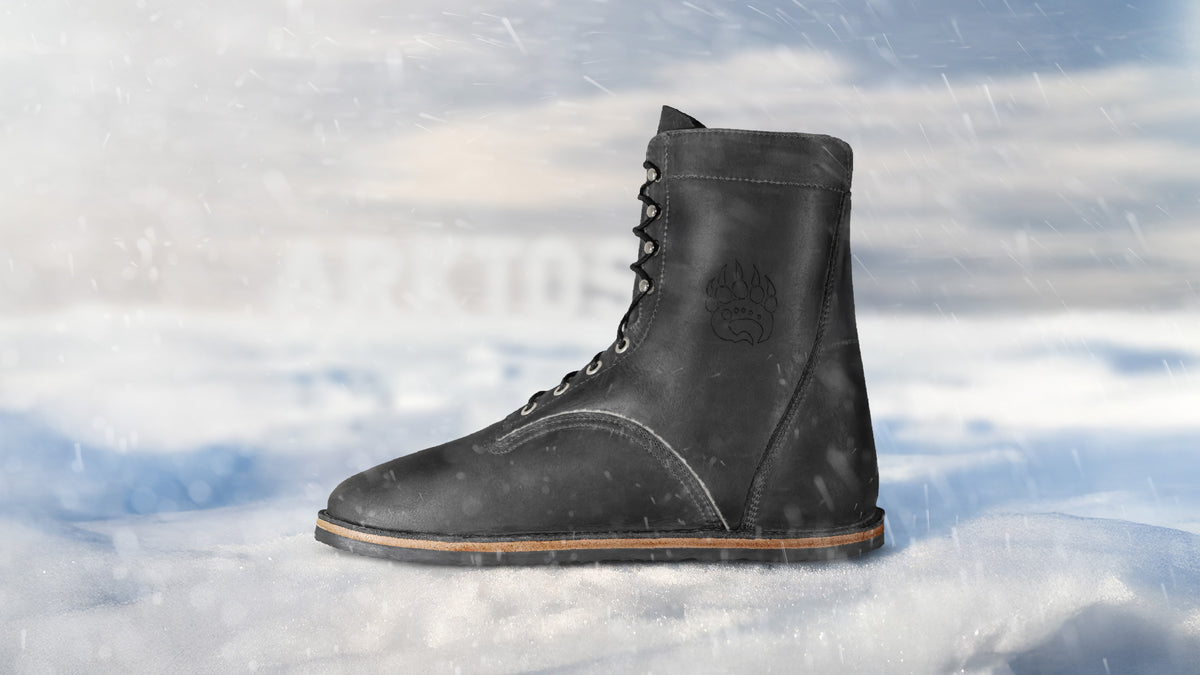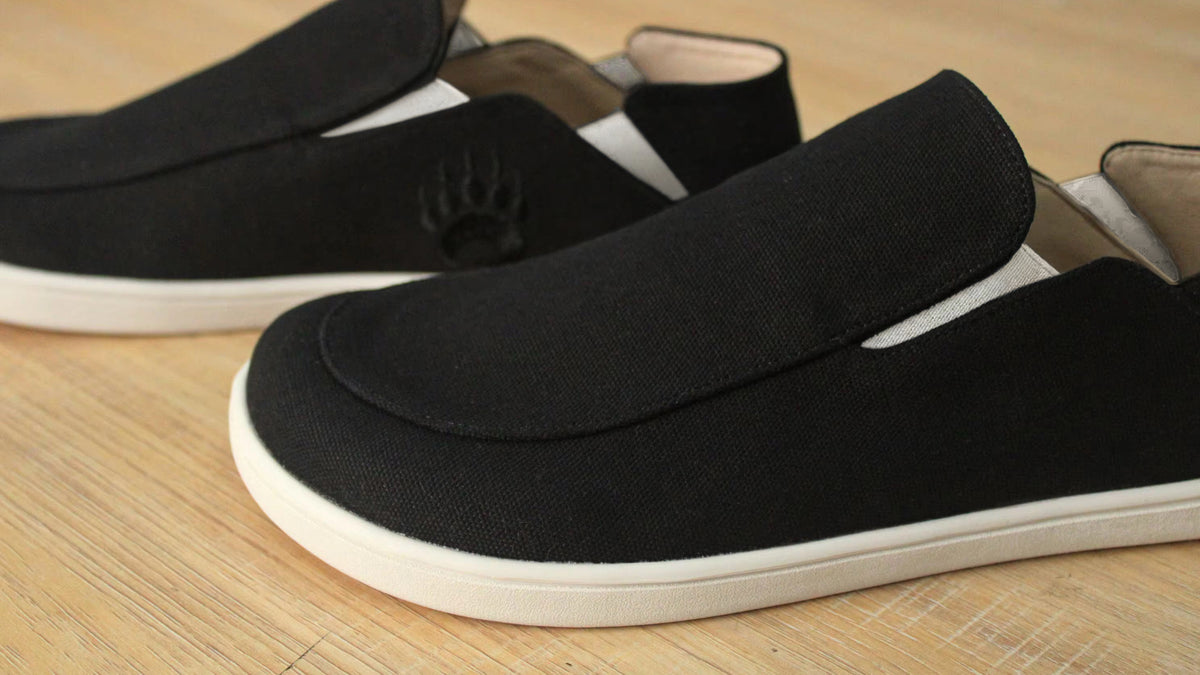How to Tame High Arches: Train Your Pain Away
Written by: John Baker and Lily Hoog-Fry
What is a High Arch?
A 'high arch' is when the medial longitudinal arch of the foot pulls up away from the floor. Sometimes higher arches are caused by neurological pathologies/conditions that disrupt the central nervous system's ability to regulate the dynamic rhythm between the ankle and foot (think muscle alignment and timing).Other times this faulty foot structure can result from non-pathological ankle and foot misalignments – which typically stem from muscle weakness or strength imbalances caused by posture, faulty movement patterns, injuries, worn-out footwear, and footwear with improper postings/support that cause the ankle to roll laterally. (4)(9)
Why Do High Arches Matter?
Regardless of the cause, when the arch is too high, it becomes abnormally stiff, supinated/inverted, and curved. This rigidly lifts the metatarsal bones from the ground and bunches them up, decreasing the entire foot’s load tolerance and resiliency (4)(12).
When the medial arch is too high, we must shift our entire body weight anteriorly and laterally on our feet. This decreases our ability to properly distribute load across the first three metatarsals and the medial and transverse arches. These shifts reduce the surface area of the bottom of your foot in contact with the ground. This, in return, increases the stress on the structures on the ground and those that support them. This can lead to overuse injuries due to repetitive microtrauma over time (3)(9)(10). This shifting can decrease the recruitment of the ankle musculature, compromise our movement patterns, increase susceptibility to lateral ankle sprains, and possibly lead to ankle instability over time (1)(5)(6)(7)(11).
What Can You Do About It?
When someone develops a cavus foot (yet another name, high arch), it can usually be broken down into two general areas of focus for care:
- Decreasing the tension on the things pulling the foot into supination/inversion, and
- Increasing the strength of the muscles that pull the foot into pronation/eversion.
How to Loosen Up:
When understanding which structures are tight vs. weak, we can divide the leg into its medial and lateral halves. The medial (inside) half will be where we have our tight things that need to get loose, and on the latter (outside), we have the weak things that need to strengthen.
When looking at the medial side of your lower leg, we will focus our attention on four muscles:
- Tibialis Posterior
- Flexor Digitorum Longus
- Flexor Hallucis Longus, and
- Soleus
Although the soleus attaches bilaterally, it biases the medial side of the common gastroc-soleus tendon (Aka: the Achilles Tendon), so when it is tight, it can assist in pulling the foot into an inverted/supinated position.The other three muscles are exclusively unique to the medial side of the lower leg. Still, their tendons cross the ankle and attach to various locations throughout the foot. Thus, when tight, they all pull the foot into inversion/supination.
Here are some exercises to release tension throughout your foot and hopefully relieve arch pain.
- Myofascial Release with Ball: This is an excellent tool for loosening things up!You can use any round object, although a lacrosse ball is generally the most common thing to use.
- Sit in a chair with your feet flat on the ground, ball in hand.
- Place the ball on your shin up by your knee.
- Roll the ball medially (inward) until it rolls off the shin onto soft tissue.
- Use both of your hands like a vice grip, pinning the ball to your leg (one hand on the ball on the inside of the leg, the other hand on the outside of the leg)
- Now, with the ball firmly pressed into the inside of your leg, invert/evert your foot 3x, then dorsiflex/plantar flex 3x
- Move the ~2in lower on the leg and repeat
- Repeat this sequence until you reach the ankle (end of the leg), and then switch to the other leg
- Inverter Stretch: This is great for stretching out connective tissue.
- First, find something like a hand towel or sock
- Next, find something to stretch your calf on, like a stair
- With your foot in a position that stretches your calf muscles, slide the hand towel or sock (or whatever) under the outside of your foot (it can be anywhere from really thin to 1” thick), right where your 3rd, 4th, and 5th toes attach to the ball of the foot.
- This should place your foot in slight eversion (lowering your arch), and you should feel the stretch localize more to the medial/inside of the lower leg (same area where we have the tight muscles)
- Hold for 30 seconds and switch sides, repeating 4x per side (total of 2min per side)
How to Strengthen Your Shins:
As mentioned earlier, we will focus our strength efforts on targeting the muscles outside the lower legs for some additional support: the peroneus longus, brevis and tertius (only some people have that last one!).
These muscles are not the only muscles that inhabit the lateral lower leg, but they are the ones that need to get stronger to help pull the arch of your foot down and, therefore, will be emphasized in our approach to mitigate foot pain.
Here are some strength training exercises you can do to address your specific needs and build more natural arch support.
- Banded Ankle Eversions: This is a great way to work our target muscles in an isolated manner.
- Find a light resistance band (this can either be a big circular band or a smaller circular band)
- Sit down with your legs extended in front of you, heels in contact with the ground.
- Wrap the band around both feet in the midfoot/forefoot region (if you have a big circular band, you may have to double it up on itself so that it isn’t too big)
- Using one foot as an anchor, begin to evert the other foot for 10-15 reps – utilize a slow and controlled concentric and eccentric at first to ensure you feel the correct muscles recruiting.
- Repeat for 3 sets per leg, increasing volume or intensity as needed.
- Big Toe Calf Raises: This will be a great way to incorporate training the peroneal muscles in a closed-chain setting.
- For this drill, putting a coin or a piece of paper underneath the foot, on the ground where the big toe and foot connect (1st metatarsal head) can be helpful.
- With your feet on flat ground, grab onto something for support. Your lack of stability may surprise you!
- Shift your weight around and take stock of how that changes what your weight feels on your feet and how that changes how the ground feels underneath you.Try and settle into a place that feels like your weight is centered evenly across the soles of your feet (think about the tripod foot we’ve mentioned in previous articles)
- With a slow and controlled contraction, focus on pushing through the 1st Metacarpal Phalangeal Joint (where the big toe meets the foot), which will begin to raise the heel off the ground. This cue will help bias the peroneus longus muscle and restrict your ability to compensate and shift tension elsewhere.
- Slowly lower your heel back to the ground, never allowing your weight to shift off from the 1 MCP joint, keeping the arch down and the tension where you want it.
- Start with just a handful of great calf raises at a time scattered throughout the day (reps don’t matter, QUALITY does). Scale up slowly as needed and as you get better.
Why Should You Care?
While having an arch that is too high isn’t a severe healthcare condition, it can lead to degenerative and debilitating consequences in the long term (who likes chronic ankle pain and repetitive sprains?). Even worse, it can decrease your performance and potentially cause you to stop training due to an increased risk of traumatic and stress-related injuries. I don’t know about you, but I want to remain healthy because of my feet, not despite my feet.
REFERENCES




























